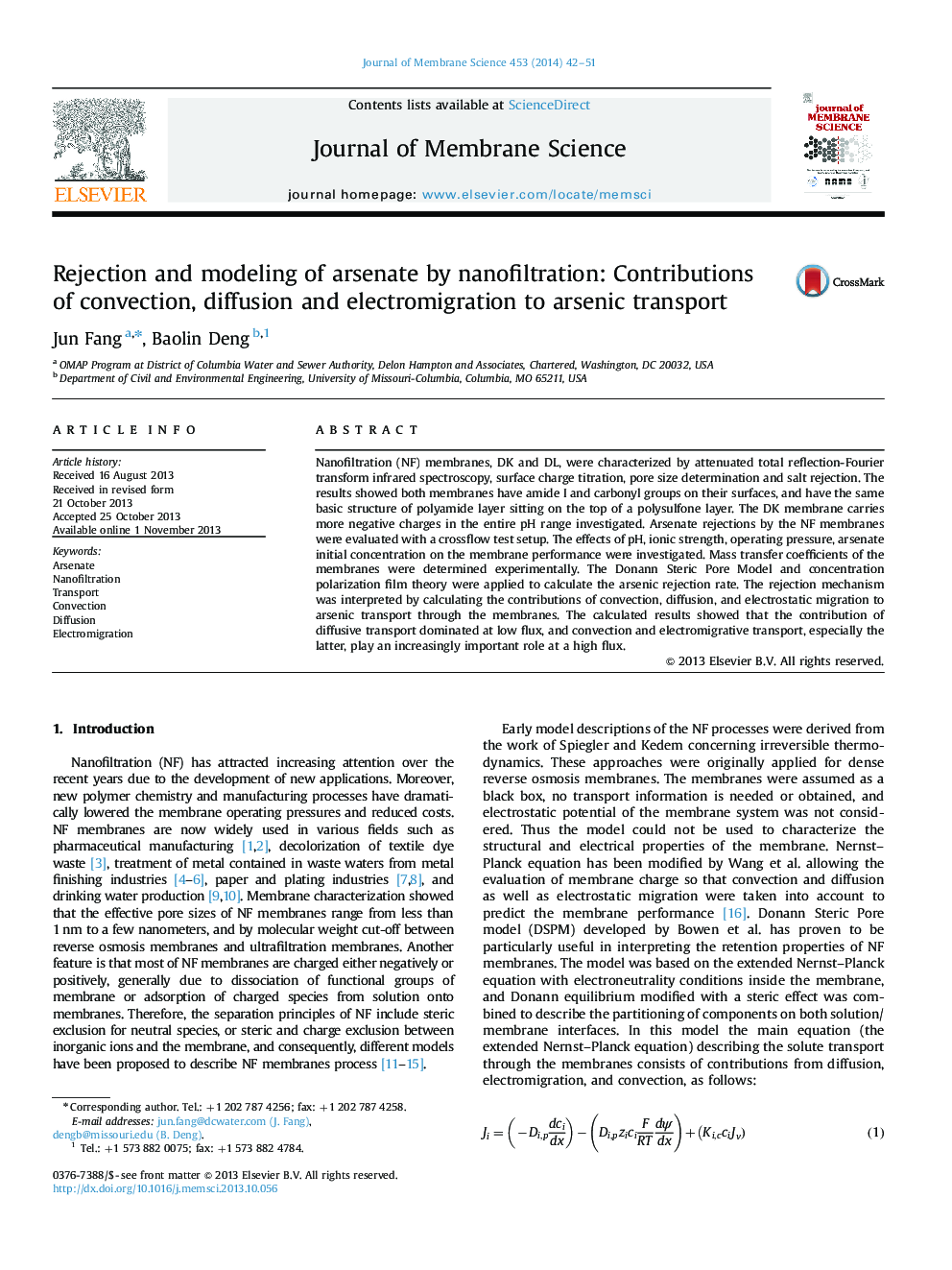| Article ID | Journal | Published Year | Pages | File Type |
|---|---|---|---|---|
| 633768 | Journal of Membrane Science | 2014 | 10 Pages |
•As(V) rejection varied when operating parameters changed.•DSPM model and concentration polarization theory well predicted As(V) rejection.•With normalized volume charges |ξ|>10, diffusion dominates at low flux.•Contribution of diffusion decreased with the increasing flux.•The convection and electromigration play an increasing critical role at a high flux.
Nanofiltration (NF) membranes, DK and DL, were characterized by attenuated total reflection-Fourier transform infrared spectroscopy, surface charge titration, pore size determination and salt rejection. The results showed both membranes have amide I and carbonyl groups on their surfaces, and have the same basic structure of polyamide layer sitting on the top of a polysulfone layer. The DK membrane carries more negative charges in the entire pH range investigated. Arsenate rejections by the NF membranes were evaluated with a crossflow test setup. The effects of pH, ionic strength, operating pressure, arsenate initial concentration on the membrane performance were investigated. Mass transfer coefficients of the membranes were determined experimentally. The Donann Steric Pore Model and concentration polarization film theory were applied to calculate the arsenic rejection rate. The rejection mechanism was interpreted by calculating the contributions of convection, diffusion, and electrostatic migration to arsenic transport through the membranes. The calculated results showed that the contribution of diffusive transport dominated at low flux, and convection and electromigrative transport, especially the latter, play an increasingly important role at a high flux.
